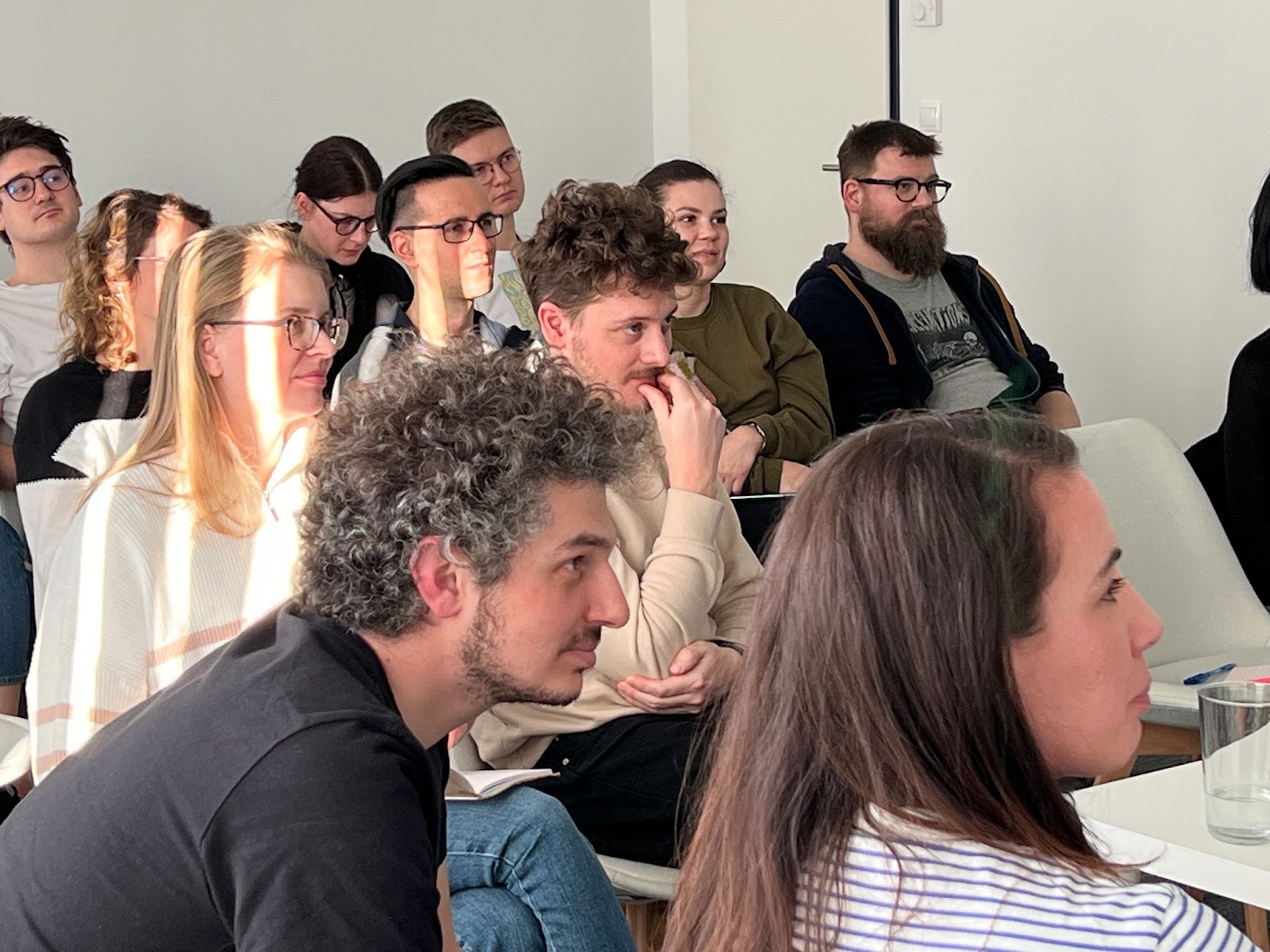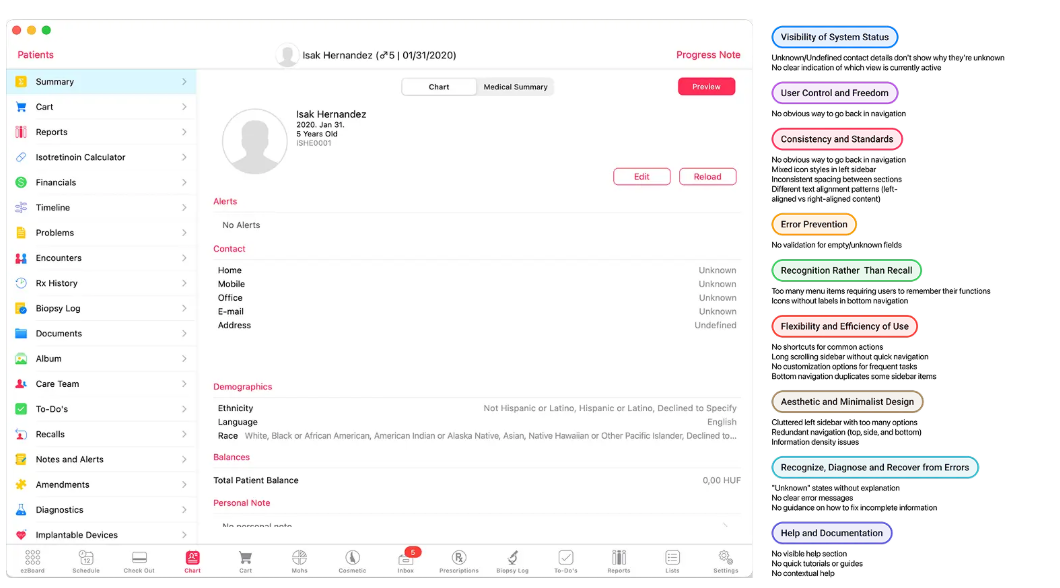The future UX researcher: strategic, AI-savvy, but human-centered
UX research has evolved dramatically. From early usability labs focused on task completion to strategic research that shapes entire product roadmaps, our field has continuously changed.
At UX studio, our team has been navigating these changes firsthand. In this article, we'll explore how AI is changing research, what skills are becoming essential, and ways you can develop them.
.png)
How AI changes UX research
What AI does well
AI research tools help with routine, data-heavy tasks:
- Automated transcription of interviews and usability tests
- Thematic analysis and initial clustering and tagging of qualitative data
- Sentiment analysis of open-ended survey responses
- Summarizing large volumes of feedback
- Generating preliminary insights
Tools like Looppanel, Dovetail, Condens and Maze already help researchers work faster.
At UX studio, we use tools like Dovetail and Condens to transcribe and analyze large numbers of interviews. What used to take our team a couple of weeks of work now happens in days. But here's the key: human researchers still need to interpret the patterns and decide which insights matter most for the product strategy. They also need to carefully review the AI output.
What AI can't replace
Human researchers remain irreplaceable, especially in user-facing areas of UX research. We have found four critical areas where personal research skills are needed. :
1. Human connection & communication
Forming genuine connections with participants is a key skill. AI systems can't facilitate workshops or decode non-verbal cues.
When participants hesitate, look uncomfortable, or their body language doesn't match their words, human researchers instantly adapt. We can rephrase questions, offer comfort, and check if we interpreted non-verbal responses correctly. Ultimately, our job is to create safe spaces for honest feedback. Participants are less likely to share deeper insights with an automated system, and in turn, systems will miss follow-up opportunities or fail to interpret emotional cues. Speaking of which…
2. Empathy & emotional intelligence
Understanding participants' emotions and identifying what to follow up on requires the ability to relate personally. While AI detects keywords like "frustrated," human researchers are able to feel the weight of someone's disappointment, which we can put in context.
We notice excitement, confusion, or deflation and use emotional intelligence to ask follow-up questions that uncover the "why" behind behaviors.

UX researchers also have a healthy dose of doubt. They’ll check whether they misinterpreted something, and can catch omissions, overstatements, and other typical human “glitches.” AI systems are typically built to be confident in their assertions (to the point of filling in blanks with hallucinated data) and rarely assume that the participants may struggle with accuracy. This brings us to context.
3. Contextual understanding
Making sense of complex problems goes beyond what's written or said. When a user says they "always do this at home," we understand their environment, routines, and social context that AI would miss. We recognize cultural patterns, industry-specific challenges, and spot when technical problems are rooted in human behavior.
Communication is more than an exchange of facts, so you must be able to account for the context of the interview, and gently guide the interview to a source of truth.
Organizational navigation is key here.
4. Organizational navigation
Navigating team dynamics and building consensus requires interpersonal skills that are fundamentally human. This means presenting controversial findings diplomatically, challenging assumptions tactfully, and building alliances to ensure insights are taken into account and can drive change. We are able to navigate internal politics and tailor communication for different audiences.

What this all means
Researchers must provide oversight for AI tools by spotting inconsistencies and making sure that AI hasn't missed crucial nuances.
AI might interpret sarcastic comments like "great, another update…" as positive feedback, missing the frustration in the tone. Human researchers must always validate findings and catch misleading conclusions.
The human-AI relation
The way we should look at the future isn't in terms of humans versus machines. It's in humans with machines. The most effective researchers understand where AI adds value and where human judgment remains essential.
As AI handles data processing, our value lies in developing our uniquely human capabilities. This means becoming better at reading between the lines and understanding cultural context.
Strategic partners, not testers
The AI transformation is happening alongside another major shift: UX researchers are becoming strategic partners rather than tactical executors.
At UX studio, we tend to work in embedded teams. Our researchers become part of the client’s team and instead of just presenting research findings, offer insights and strategic suggestions, actively participate in ideation, and work closely with designers on building the best solutions.

Companies no longer just want to know if users can complete tasks. They want to understand how user insights drive business growth.
Strategic researchers have to frame their work in business terms. A deep understanding of revenue models and competitive landscapes is a must. When research findings influence product roadmaps and market positioning, the value becomes clear to everyone: research connects user needs and business goals.
How to future-proof your UX research career
Become AI-savvy
AI savvyness enables efficiency and scale. It allows researchers to tackle bigger questions and deliver insights faster.
- Start experimenting with AI tools for transcription and analysis, general AI assistants, and testing platforms
- Practice using AI for analysis while validating the outputs yourself
- Understand AI’s potential and limitations
Become more strategic
Strategic thinking ensures research questions bring business value and help achieve organizational goals.
- Connect your research questions to business objectives and metrics
- Partner with product and data teams early in the research process
- Learn to speak the language of impact, not just usability
Stay human-centered
Human-centered approaches ensure that efficiency doesn't come at the cost of empathy. Strategic decisions remain grounded in genuine human needs.
- Focus on building deeper empathy and emotional intelligence
- Develop skills in reading cultural context and non-verbal cues
- Always advocate for users, especially underrepresented groups
These areas work together. Strategic thinking without human insight lacks soul. AI tools without a strategic focus waste time. Human empathy without business impact gets ignored.
Evaluate your future readiness
As the field of UX research evolves, it's valuable to honestly assess where you stand.
How AI-savvy are you?
Strength indicators:
- You confidently integrate AI tools into your workflow
- You can effectively prompt AI systems
- You understand AI's capabilities and limitations
Gap indicators:
- You feel overwhelmed by AI tools
- You rely exclusively on traditional methods
- You struggle to define when AI is appropriate
- You overuse AI, letting it do the thinking for you
Ask yourself:
- Can you name three ways AI could enhance your process?
- Do you understand potential biases in AI-generated insights?
How strategic are you?
Strength indicators:
- You regularly translate research into business impact
- Executives seek your input on product direction
- You participate in roadmap planning
Gap indicators:
- Stakeholders view research as a "checkbox"
- You feel limited to tactical work
Ask yourself:
- How did your last three projects influence business decisions?
- Do you understand your company's revenue model?
- Can you discuss research in business terms, not just UX terms?
How human-centered are you?
Strength indicators:
- You uncover deeper human needs beyond surface behaviors
- You advocate for diverse and inclusive design approaches
- You understand the emotional and cultural context of user actions
Gap indicators:
- Your research focuses only on what users do, not why they do it
- You struggle to build genuine empathy with participants
- Your findings miss the human story behind the data
Ask yourself:
- When did your research last reveal something surprising about human motivations?
- How well do you understand the cultural context of your users?
- Can you translate complex human emotions into actionable design guidance?
Takeaways
Our profession stands where technology and humanity meet. By combining AI efficiency with business oriented but human-centered foundation, we won't just remain relevant. We'll be more valuable than ever.

Reach out to us if you need skilled UX researchers, or a training for your team on motivational interviewing and AI-skills.
This blog post was written by Dan Jecan, UX researcher
Editing and proofreading by Johanna Székelyhidi, marketing manager
Fact-checking by Barbara Bicskei, service business lead



